1951 Lancaster Revival (11 revivals)
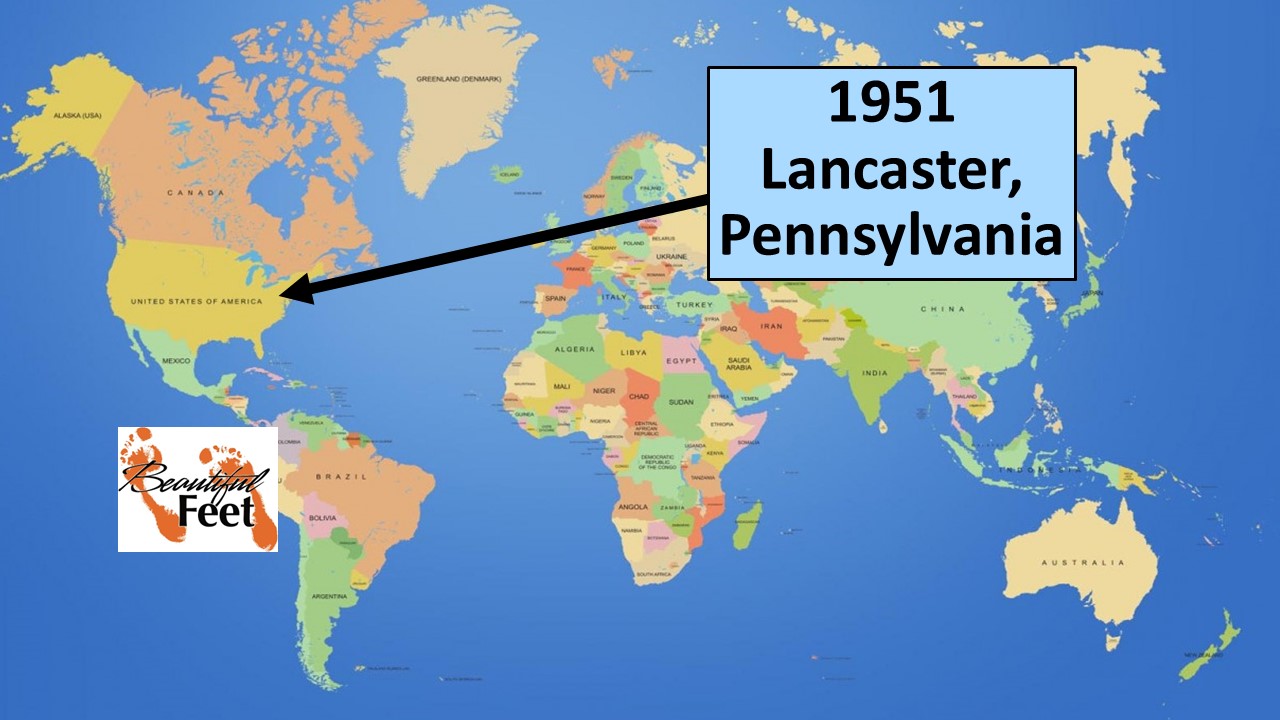
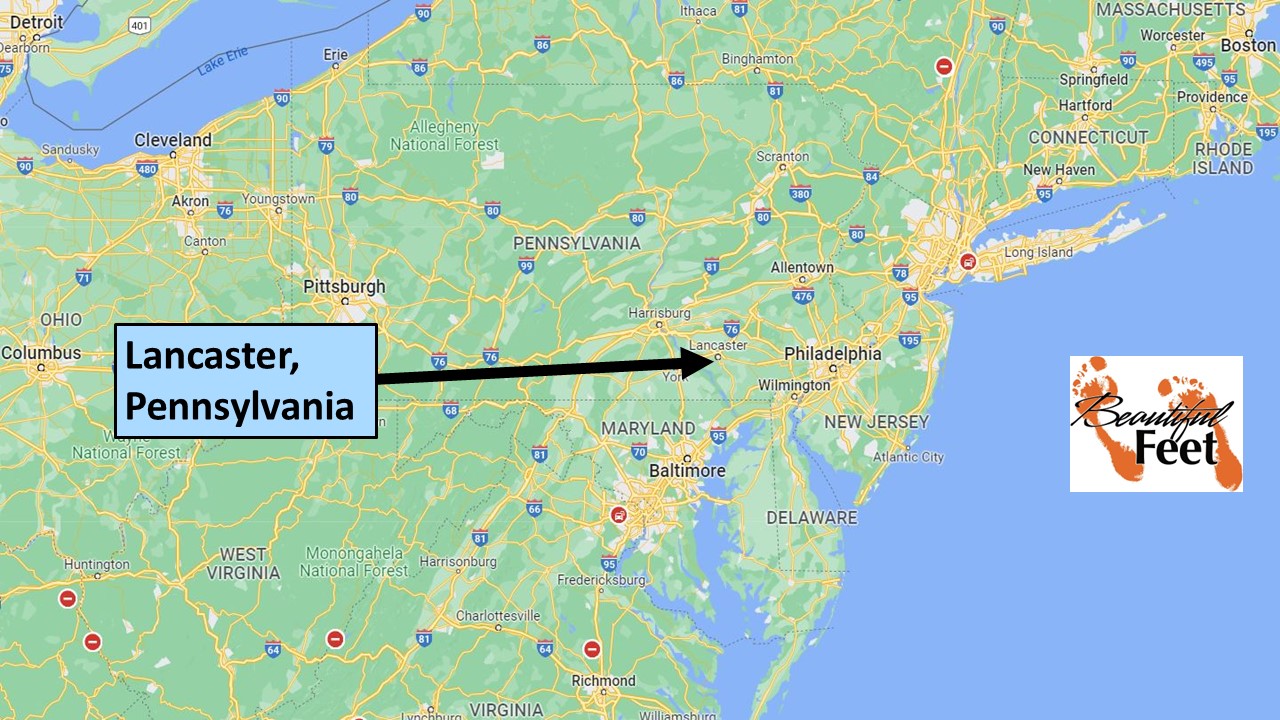
Background to this Era
Before the 1951 Lancaster Revival, revival movements in the United States often utilized tents to accommodate crowds, as churches and other venues were frequently too small. Many well-known evangelists used tents or temporary tabernacles:
► 1879-1924 Maria Woodworth-Etter
► 1896-1935 Billy Sunday
► 1947-1958 Healing Evangelists
► 1949 Billy Graham
The 1949 Los Angeles Revival, led by Billy Graham, served as an inspiration for the launch of the ministry team central to this revival account—the Brunk Brothers Revival Campaign—as well as other Mennonite revival ministries.
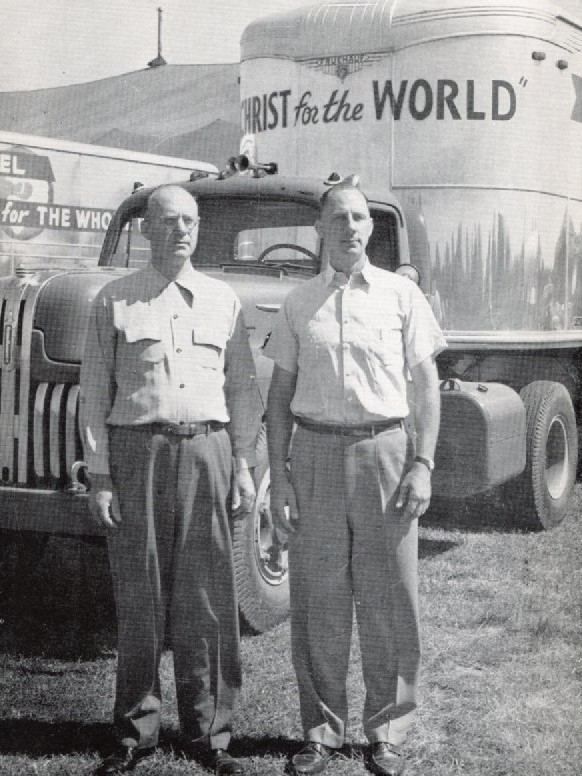
George and Lawrence Brunk
Key Figures in the Lancaster Revival
The main figures in this revival were George R. Brunk II (1911-2002) and his brother Lawrence Brunk (1917-2003). Together, they founded and managed the Brunk Revivals from 1951-1981.
In 1946, the vision for their revival meetings began after they attended a tent revival. Lawrence prayed for God to prosper his business so he could purchase the necessary equipment: a tent, truck, and trailer. When his prayers were answered, he invited George, an ordained minister, to preach at the meetings. George agreed, and this partnership marked the beginning of several decades of revival campaigns.
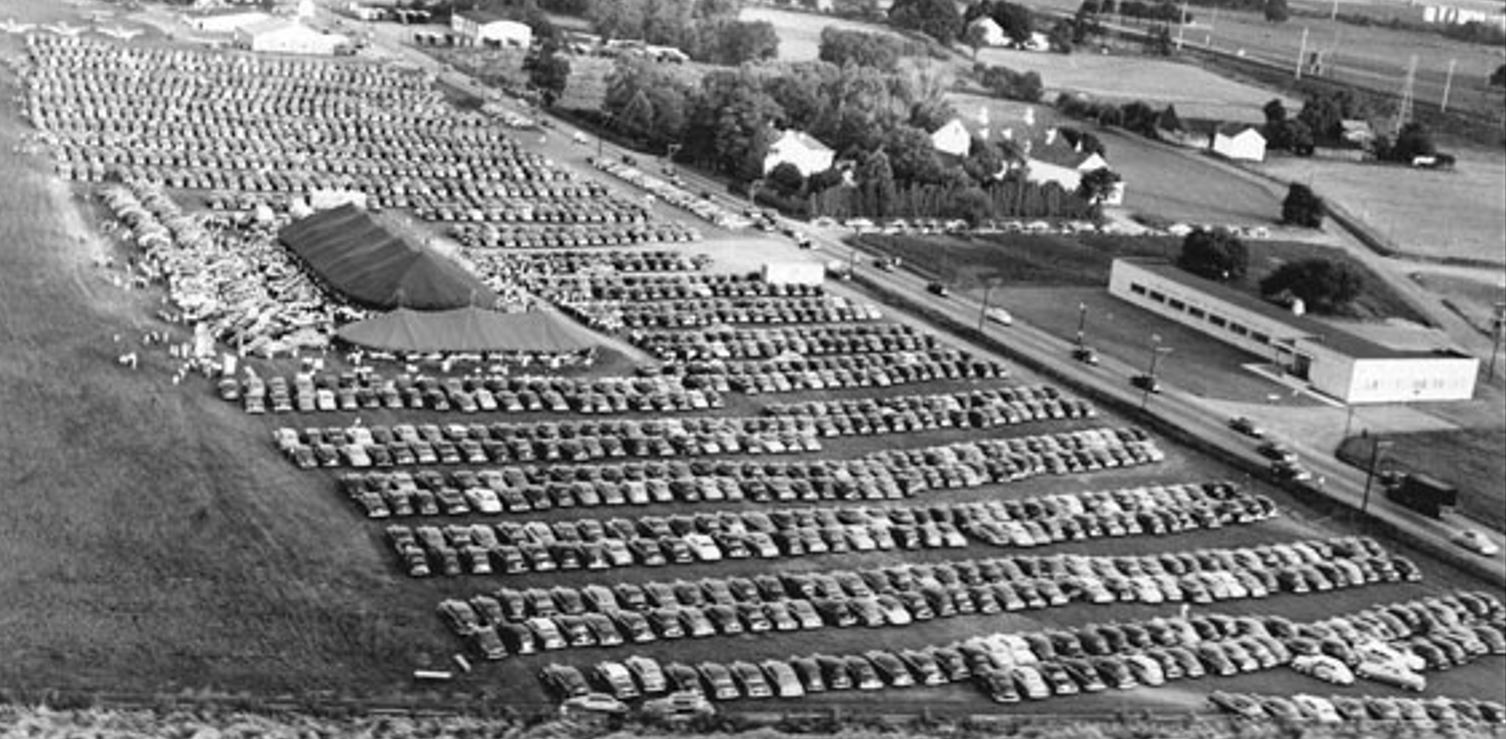
Lancaster Revival: 2 tents, 2,200 cars, and overflow crowd
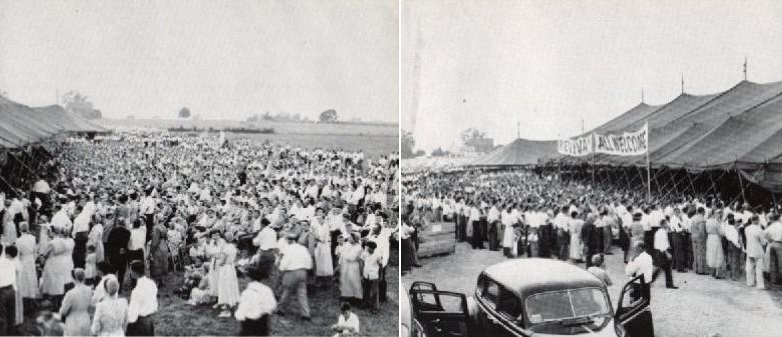
Overflow crowd at Lancaster
Great Start
The Lancaster revival lasted seven weeks, from June 3 to July 22, 1951. On opening night, 2,000 people attended. Attendance grew so rapidly that a new tent was ordered after the first week.
► On the final night, 15,000 people were present.
► The revival resulted in 200 conversions and 1,800 recommitments.
As word spread, other Mennonite communities invited the Brunk brothers to conduct revivals in their areas.
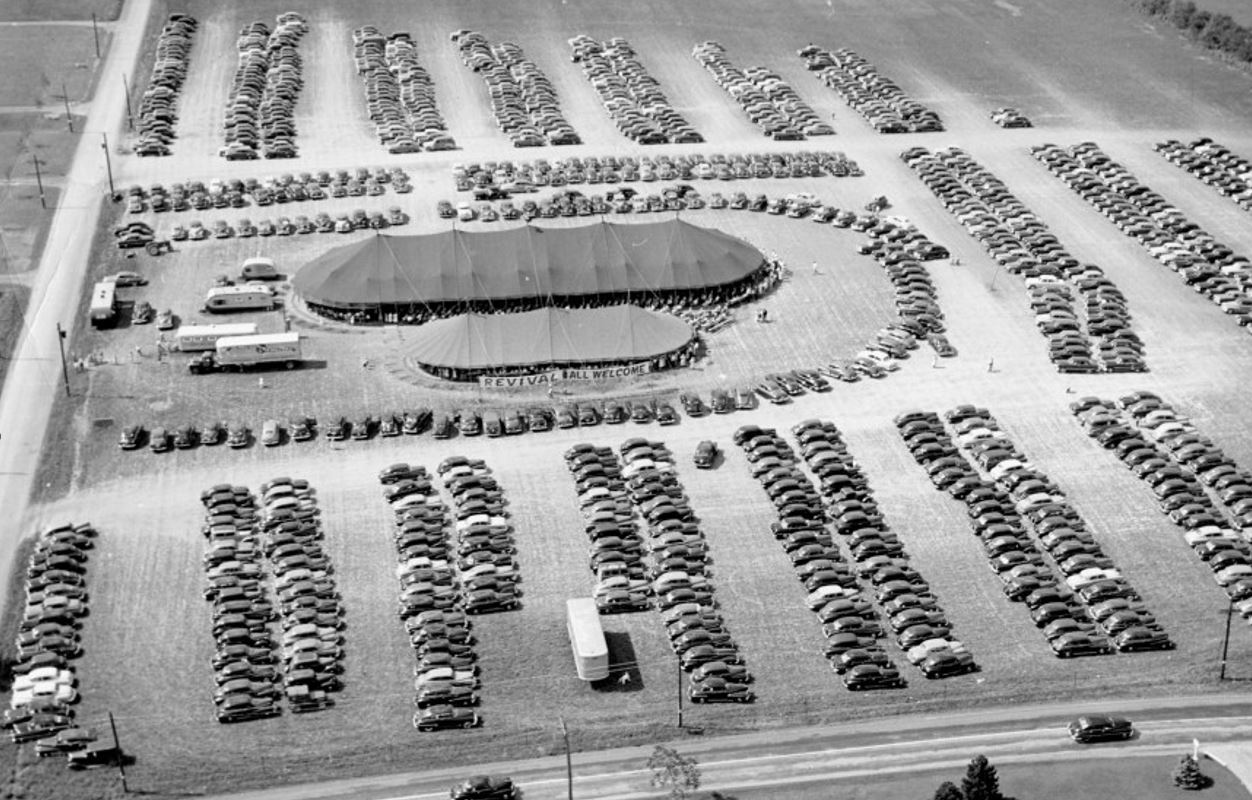
Two tents were on hand at the beginning of the Franconia Revival. The third was added the final week.
Franconia Revival
The second revival was held in Franconia, Pennsylvania, 80 miles from Lancaster. Churches in the area had eagerly prepared for the event. There were 2,000 present for their first meeting, and a third tent, seating 6,000, was erected during the final week of the five-week revival.
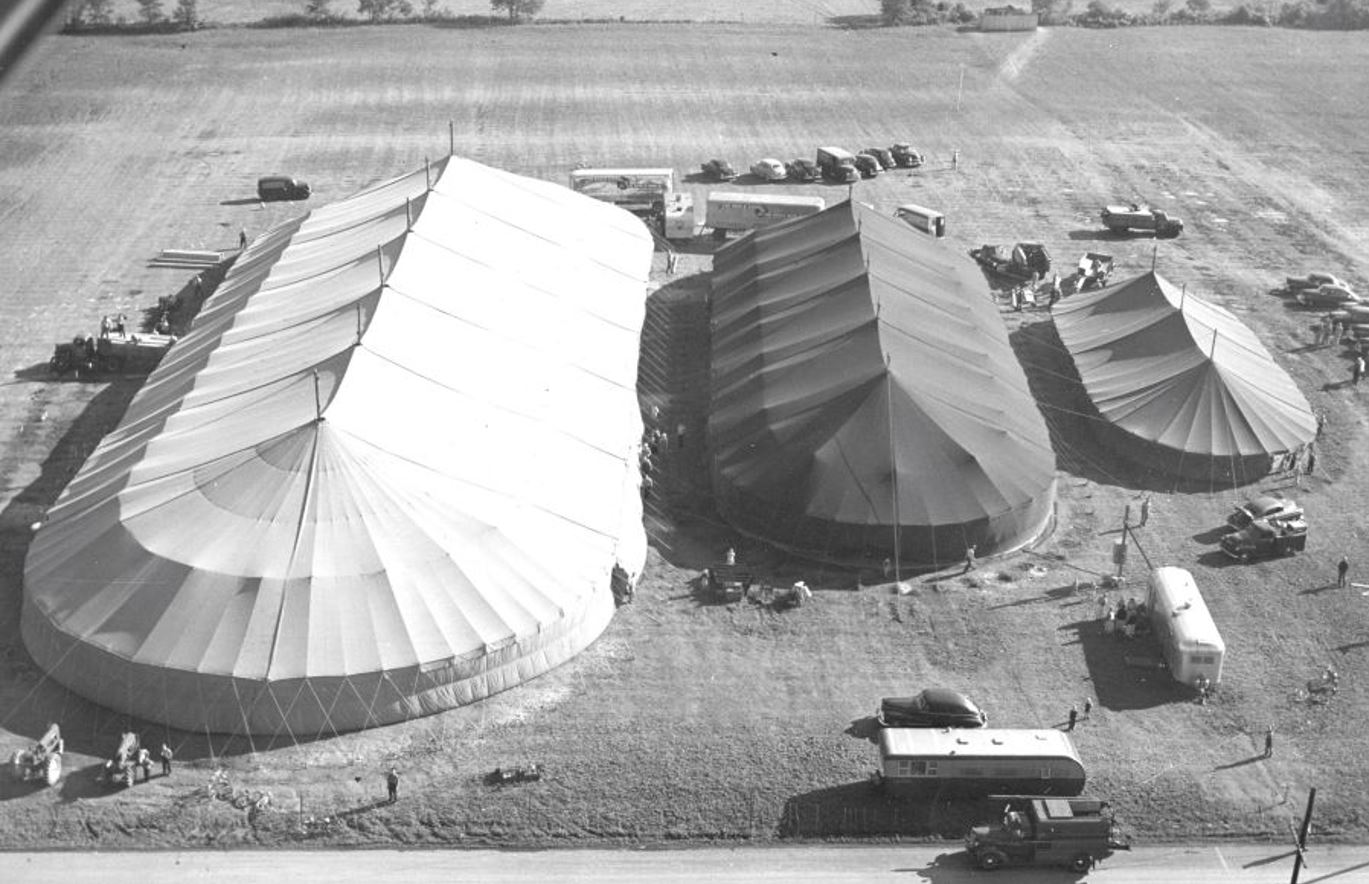
A third, 6,000-seat tent was added at Franconia during their final week
One remarkable story involved the “Franconia Cowboys,” a group of rebellious Mennonite boys who were converted and rebranded themselves as the “Franconia Christian Workers,” later dedicating themselves to ministry.
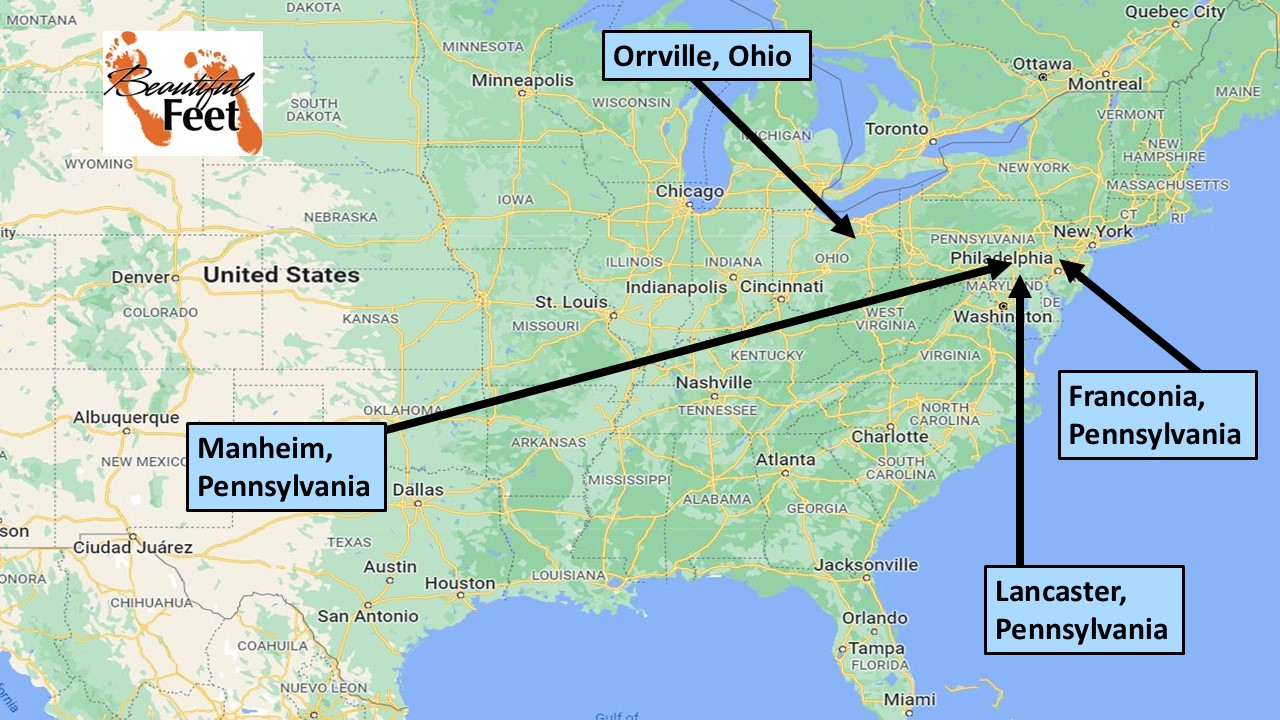
Brunk revival locations during 1951
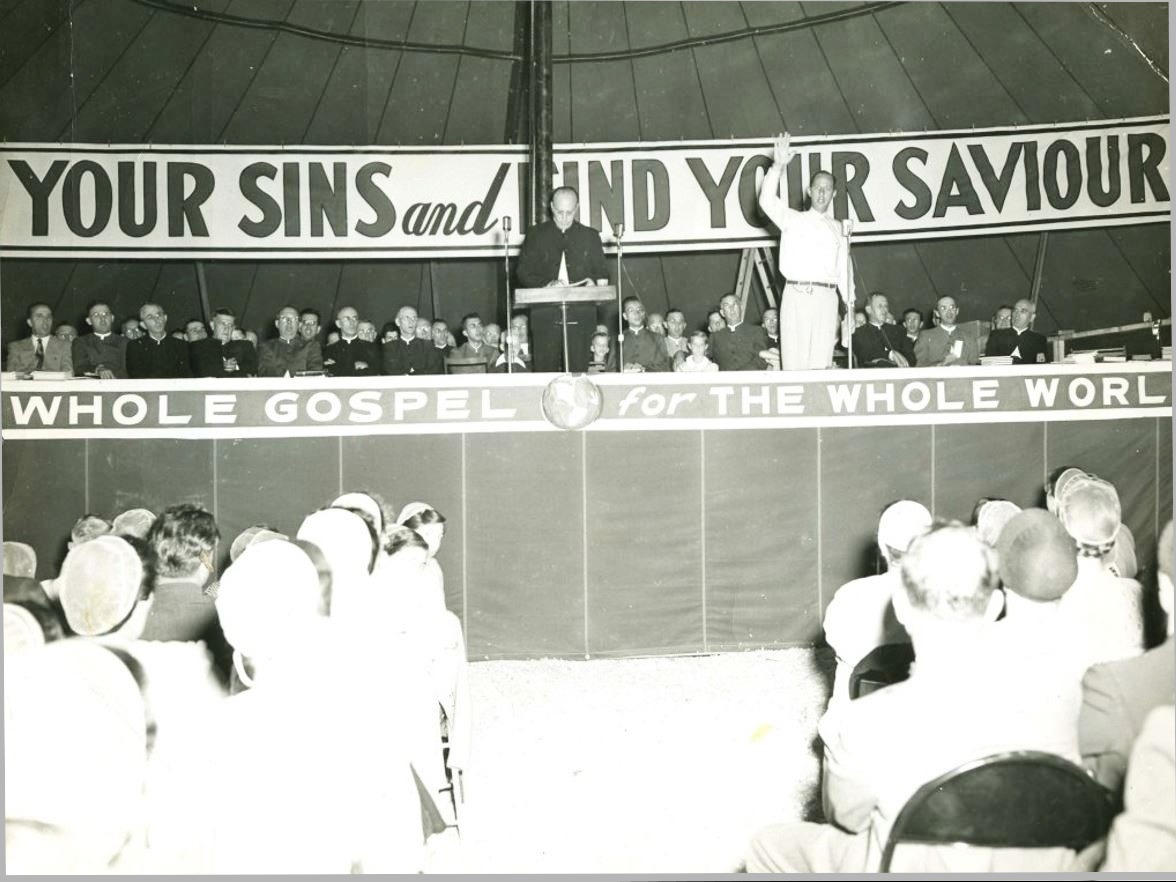
Banners
► LOSE YOUR SINS and FIND YOUR SAVIOUR
► THE WHOLE GOSPEL for the WHOLE WORLD
National Attention
By August 1952, Time magazine reported on the revival:
This week, after 14 months of evangelizing through the U.S. and Canada, the Brunks are preaching the word in Goshen, Ind., to crowds of nearly 3,000 a night. At their previous stop, Waterloo, Ont., attendance was even larger: 105,000 during four weeks of steady preaching (including 1,500 who made formal ‘decisions for Christ’). Local Canadian pastors were so pleased with the results that some canceled their own services to let their congregations hear the Brunks preach.
Community Collaboration
The Brunk brothers organized their revival campaigns with a framework similar to Billy Graham’s tent meetings. Local churches were enlisted to form committees for tasks like:
- Tent setup and maintenance
- Lighting and sound systems
- Publicity
- Seating arrangements with sawdust flooring
- Heating with oil burners
- Ushers and counselors
- Traffic management in coordination with the police
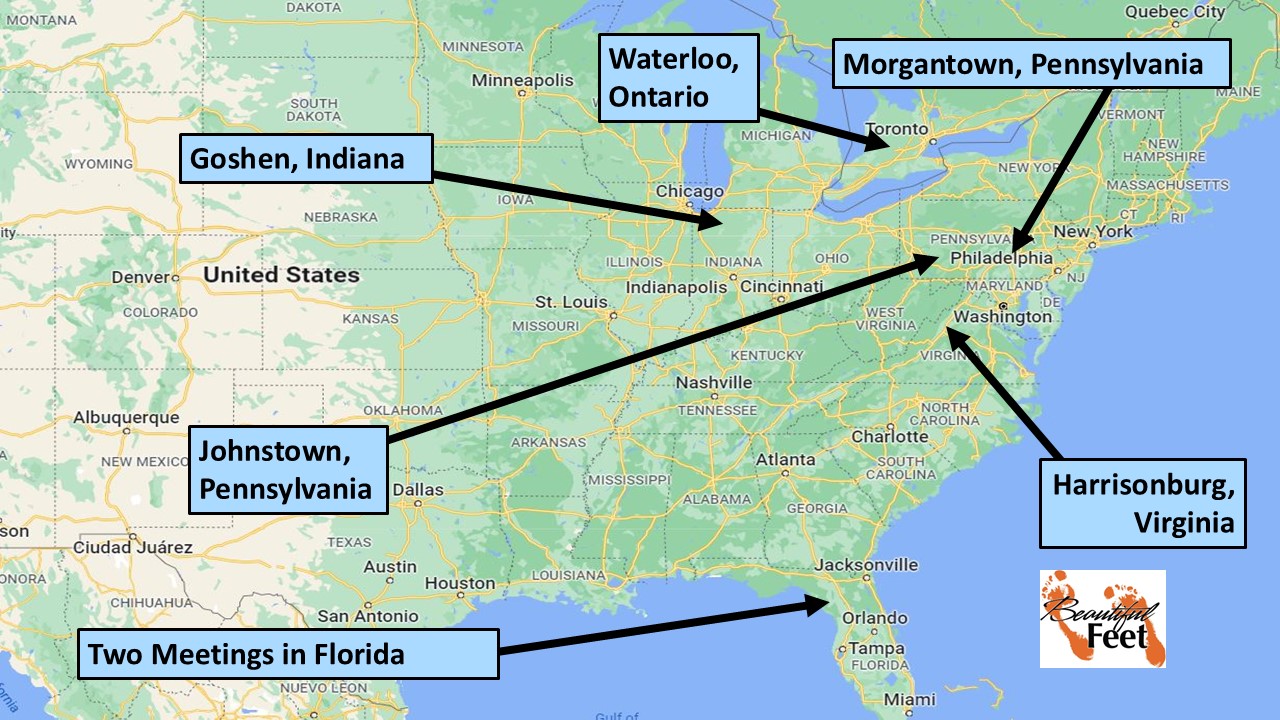
Brunk revival locations during 1952
Service Schedule
A typical Brunk Revival Meeting was less formal than what Mennonites were accustomed to and included the following elements:
► Services began at 7:30 P.M., with area ministers seated on the platform facing the crowd. Lawrence Brunk opened the meetings following the Mennonite custom of
a cappella singing.
► A short devotional followed, including scripture reading, prayer, testimonies, and more singing.
► Sermons, typically an hour long, were topical.
► The preaching strongly denounced sin and spiritual complacency while calling believers to repentance. George Brunk described the meetings as a “cleanup program” for Christians as well as an evangelistic campaign for non-believers.
► Following the sermon, individuals were invited to the front to make a profession of faith in Christ. They were then ushered to a prayer room for further counsel from ministers and laypersons.
► After the benediction, a “Testimony Service” was opened for those who wanted to share their experiences.
► Services often concluded after 11:00 p.m., as people lingered to pray and receive counsel in their renewed commitments to Christ.
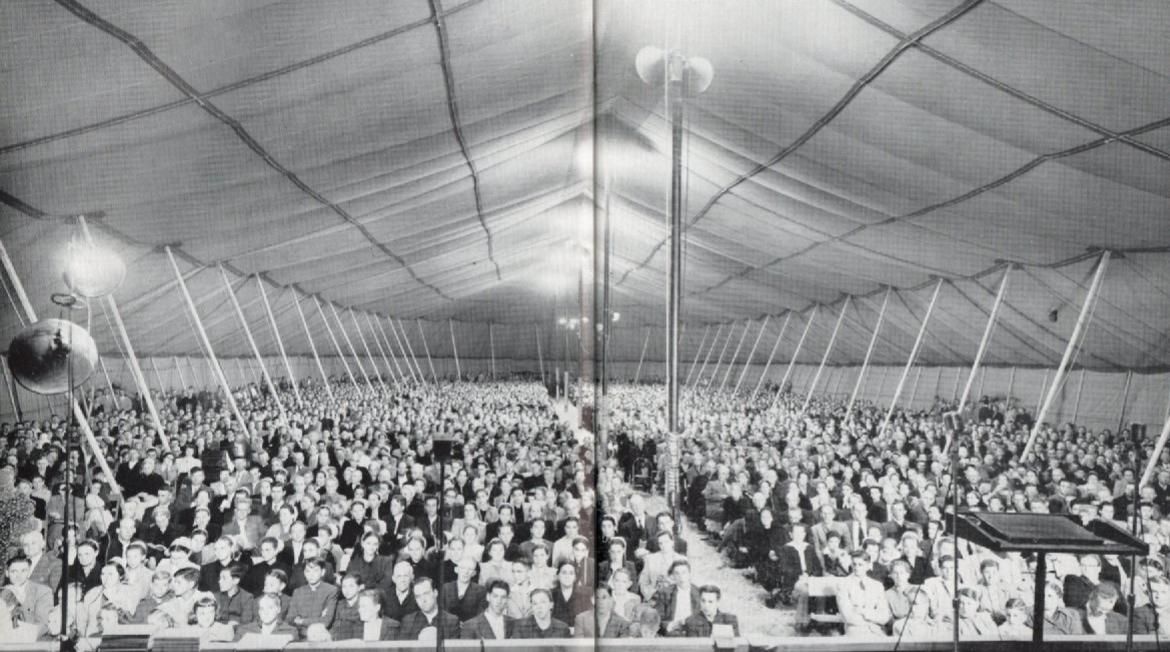
Revival in Orrville, Ohio
Results of the Revivals
► In each series of meetings from 1,000 to 2,000 persons accepted Christ for the first time, renewed their covenant as members, or made a deeper consecration as Christians.
► Previously, confessions of sins in the Mennonite church led to excommunication, then an opportunity for restoration. During this revival, the old system was set aside in favor of a more grace-filled method of dealing with personal failure.
► Following the revival meetings, local churches reported people continuing the revival-like atmosphere, with confession of sins and reconsecrations of lives to Christ.
► People were inspired to initiate prayer and Bible study meetings.
► Many acts of restitution were reported.
► Changes in ethical behavior: a dozen farmers plowed up their tobacco fields and stopped growing it. Others threw cigarettes, pipes, whiskey, playing cards, jewelry, and other items which they felt had been a hindrance to their lives into an offering rack marked “Offering for Baal.”
► Some returned to plain dress.
► Marriages were restored.
► There was a renewed focus on home missions.
► Congregations in the area became more spiritually alive, with singing taking on a new meaning.
► Worship became less formal, with greater openness to testimonies and confessions.
► The revival was the topic of conversation throughout the towns, with discussions about faith occurring in places like grocery stores and other places of business.
Long-Term Effects
Through 1981, the Brunks held over 100 tent crusades, 25 of which took place in Canada. The success of the Brunk revival meetings inspired other Mennonite evangelists to launch tent revivals, spreading the spiritual awakening across the land.
Sources
► America’s Pastor among the “Quiet in the Land” by Anabaptist Historians
► Brunk Brothers Revival Campaign by Global Anabaptist Mennonite Encyclopedia
► Brunk, George Rowland (1911-2002) by Global Anabaptist Mennonite Encyclopedia
► Brunk Revivals by Forrest Moyer
► George R. Brunk II 1950’s Revival Photographs by Mennonite Church USA Archives
► Katie Florence (Brunk) Shank by Sword and the Trumpet
► Lancaster Revival of 1951 by Dean Taylor
► Mennonite Tent Revivals by Howard Hammer and Myron Augsburger
► Revival Fires by Katie Shank
► Why Revival Leaves by Dean Taylor
Return to List of Revival Stories
Chet & Phyllis Swearingen:
Office: (260) 920-8248
romans1015@outlook.com
Beautiful Feet
P.O. Box 915
Auburn, IN 46706

